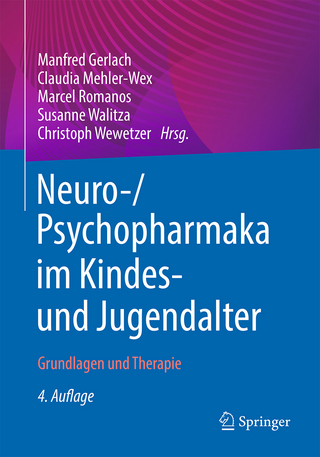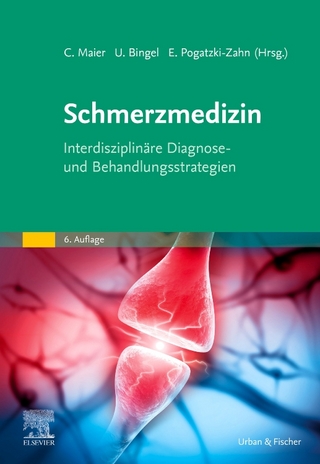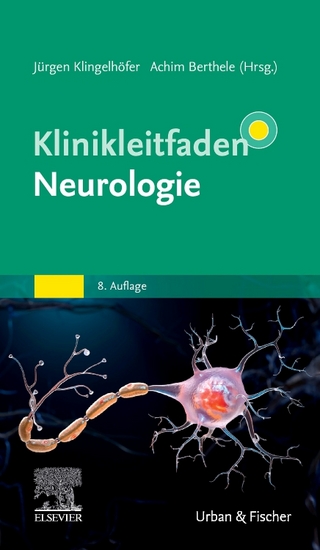
Basal Ganglia III
Kluwer Academic / Plenum Publishers (Verlag)
978-0-306-43720-5 (ISBN)
- Titel ist leider vergriffen;
keine Neuauflage - Artikel merken
This volume represents the collected papers presented at the Third Triennial Symposium of the International Basal Ganglia society (IBAGS) held at Capo Boi, Italy, June 10-13, 1989. About 300 members of the society and participants attended the symposium which was held in a delightful environment conducive to the formal and informal exchange of scientific thought. The interdisciplinary nature of the symposium was unique in its coverage of the neurosciences from molecular biology to clinical and behavioural studies. The 80 papers collected here reflect the wide spectrum and the depth of studies on virtually all aspects of the basal ganglia. Unfortunately, this book does not capture the cordial and congenial atmosphere which has characterized this, and all prior symposia of the Society. Any cooperative endeavour of this kind requires a tremendous effort and dedication, usually by a small number of individuals. The Society is especially pleased to acknowledge the support and encouragement of the "Italian Ministry of university and Scientific Research" and the "Italian National. Research Council".
In addition the society received financial support from numerous Foundations and corporations, which are listed separately under acknowledgements. Finally the Editors are pleased that Plenum Press, which has published the two previous symposia, has accepted this program for publication. It is our hope that vast scientific efforts reflected in these pages will be widely disseminated and further encourage every kind of research related to the basal ganglia.
Anatomical Organization and Chemical Neuroanatomy of the Basal Ganglia.- Striosomes and matrisomes.- The development of striatal compartmentalization: the role of mitotic and postmitotic events.- Correlated light and electron microscopy of golgi-impregnated neostriatal neurons after 6-hydroxydopamine lesions in the rat.- Coexpression of neuropeptides and glutamic acid decarboxylase in cat striatal neurons: dependence on striosomal compartmentation.- Organization of cholinergic perikarya in the caudate nucleus of the cat with respect to heterogeneities in enkephalin and substance P staining.- Neuropeptide Y neurons in the striatal network. Functional adaptive responses to impairment of striatal inputs.- Topographical organization of the thalamostriatal projections in the Japanese monkey, macaca fuscata, with special reference to the centromedianparafascicular and motor thalamic nuclei.- Complementarity of the two pallidal segments in the primate.- The pallidum as a dual structure in primates.- The connections of the medial part of the subthalamic nucleus in the rat: evidence for a parallel organization.- The subthalamic nucleus: new data, new questions.- Subthalamic nucleus afferents: anatomical and immunocytochemical features.- Characterization of the synaptic inputs to dopaminergic neurones in the rat substantia nigra.- Multi-collateralization of the dopaminergic nigrotectal projections in the rat.- Convergent projections from substantia nigra and cerebellum on pontine reticular formation of rat.- Involvement of the nucleus tegmenti pedunculopontinus in the descending pathways of the basal ganglia in the rat.- Synaptic organization of nucleus accumbens (ventral striatum).- The primate central complex as one of the basal ganglia.- The ultrastructural chemoanatomy of the basal ganglia: 1984-1989. I. The neostriatum.- The ultrastructural chemoanatomy of the basal ganglia: 1984-1989. II. The pallidum, substantia nigra and substhalamic nucleus.- Physiology of Basal Ganglia Components.- Dye-coupling in the neostriatum of the rat.- Neurophysiological changes in aged striatal neurons in rats.- Short-term plasticity in the ventral striatum: a comparison between in vivo and in vitro measurements.- Spontaneous depolarizing synaptic potentials in the neostriatum.- Dopamine D1 receptors and terminal excitability in the striatonigral and nigrostriatal systems.- In vivo development of the spontaneous activity of rat nigrostriatal dopaminergic neurons.- Characterization of gaba and glycine actions on substantia nigra zona compacta neurons.- Cholinergic excitation of A9 and A10 dopaminergic neurones in vitro through both nicotinic and muscarinic receptors.- Inward rectifying properties of nucleus accumbens neurones in vitro.- The glutamatergic and gabaergic transmitter system in the rat nucleus accumbens: an electrophysiological in vitro study.- A comparison of single unit activity in primate caudate nucleus and putamen in a sensory cued motor task.- Pharmacology of Dopamine and Relationships with Other Neurotransmitters.- Comparative distribution of D1 receptors and mu opiate receptors in the neonatal rat striatum: effects of an early lesion of dopaminergic fibers.- Dopaminergic and muscarinic cholinergic receptor subtypes: localization to neurotransmitters specific components of the striatum.- Pharmacological and morphological properties of two functionally distinct subpopulations of striatal neurons.- Influence of cortico-striatal glutamatergic neurons on dopaminergic transmission in the striatum.- Modulation of striatal dopamine and acetylcholine release by different glutamate receptors: studies with in vivo microdialysis.- Distinct cholinergic control of dopamine release in striosomal and matrix areas of the cat caudate nucleus.- Effect of neurotensin on dopamine and muscarinic acetylcholine receptors in the rat striatum.- Regulation of NT receptors after chronic treatment with typical and atypical neuroleptic drugs.- Evidence for D2 dopamine receptors modulating noradrenaline release in the rat frontal cortex.- Comparative investigations of terguride isomers on central dopamine and noradrenaline functions.- Specifically evoked release of newly synthesized or stored dopamine by different treatments.- Interactions between D1 and D2 dopamine receptor mechanisms: the immediate early response gene c-fos in long-term changes in the striatum.- Inhibitory role of dopaminergic D2 receptors in the expression of glutamic acid decarboxylase and preproenkephalin mRNA in the rat striatum.- Modulation of gene expression by neuronal lesions in the rat striatum.- Priming of the behavioural expression of dopamine-receptor supersensitivity in the basal ganglia: pharmacological and biochemical studies.- Pharmacological Effects upon Behaviour.- Behavioral effects of single and repeated treatments with the combination of D1 and D2 antagonists.- Responses of motor- and nonmotor-related neostriatal neurons to amphetamine and neuroleptic drugs.- The role of the dorsal and ventral striatum in the therapeutic and extrapyramidal side effects of neuroleptic drugs.- Interaction of EAA- and GABA-neurotransmission in the SNR of cats: open field behaviour.- Responses of monkey dopamine neurons to external stimuli: changes with learning.- The basal ganglia: a role in mediation of motor equivalence.- Models of Basal Ganglia Pathology.- The importance of MPP+ localization for the manifestation of MPTP-induced neurotoxicity.- Methamphetamine and MPTP: similarities and differences in mechanisms of neurotoxin action.- Retrograde axonal transport of MPTP after unilateral caudate nucleus infusion in the monkey.- Chronic administration of 1-methyl-4-phenyl-1,2,3,6-tetrahydropyridine to marmosets.- L-dopa-induced chorea and dystonia in MPTP-treated squirrel monkeys.- Electrophysiological study of dyskinesia produced by microinjection of picrotoxin into the striatum of the rat.- Neurophysiological development of fetal neostriatal neurons transplanted into adult neostriatum.- A primate model of Huntington's disease: unilateral striatal lesions and neural grafting in the baboon (papio papio).- (14C)-2-deoxyglucose autoradiographic studies of dopaminergic drugs in an animal model of Parkinson's disease.- Effects of transient global ischemia on the basal ganglia of rat.- Role of D1 and D2 dopamine receptors in pilocarpine-induced seizures.- Dopaminergic dysfunctions in neonatal hypothyroidism.- Advances in the understanding of neural mechanisms in movement disorders.- Studies of Direct Clinical Interest.- Neuropeptide mRNA expression in human basal ganglia.- Neuropeptides receptors changes in Huntington's chorea basal ganglia are unrelated to changes in neuropeptides levels.- Neural activity of the basal ganglia in Parkinson's disease studied by depth recording and pet scan.- Differential aspects of Parkinsonian akinesia as revealed by limb movement studies.- Retinal visual dysfunction in Parkinson's disease is enhanced by low contrast stimuli.- Rapid eye movements during stage REM are modulated by nigrostriatal dopamine neurons?.- In vivo neurochemical analyses of exogenously administered L-dopa:implications for treatment of Parkinson'1989. II. The pallidum, substantia nigra and substhalamic nucleus.- Physiology of Basal Ganglia Components.- Dye-coupling in the neostriatum of the rat.- Neurophysiological changes in aged striatal neurons in rats.- Short-term plasticity in the ventral striatum: a comparison between in vivo and in vitro measurements.- Spontaneous depolarizing synaptic potentials in the neostriatum.- Dopamine D1 receptors and terminal excitability in the striatonigral and nigrostriatal systems.- In vivo development of the spontaneous activity of rat nigrostriatal dopaminergic neurons.- Characterization of gaba and glycine actions on substantia nigra zona compacta neurons.- Cholinergic excitation of A9 and A10 dopaminergic neurones in vitro through both nicotinic and muscarinic receptors.- Inward rectifying properties of nucleus accumbens neurones in vitro.- The glutamatergic and gabaergic transmitter system in the rat nucleus accumbens: an electrophysiological in vitro study.- A comparison of single unit activity in primate caudate nucleus and putamen in a sensory cued motor task.- Pharmacology of Dopamine and Relationships with Other Neurotransmitters.- Comparative distribution of D1 receptors and mu opiate receptors in the neonatal rat striatum: effects of an early lesion of dopaminergic fibers.- Dopaminergic and muscarinic cholinergic receptor subtypes: localization to neurotransmitters specific components of the striatum.- Pharmacological and morphological properties of two functionally distinct subpopulations of striatal neurons.- Influence of cortico-striatal glutamatergic neurons on dopaminergic transmission in the striatum.- Modulation of striatal dopamine and acetylcholine release by different glutamate receptors: studies with in vivo microdialysis.- Distinct cholinergic control of dopamine release in striosomal and matrix areas of the cat caudate nucleus.- Effect of neurotensin on dopamine and muscarinic acetylcholine receptors in the rat striatum.- Regulation of NT receptors after chronic treatment with typical and atypical neuroleptic drugs.- Evidence for D2 dopamine receptors modulating noradrenaline release in the rat frontal cortex.- Comparative investigations of terguride isomers on central dopamine and noradrenaline functions.- Specifically evoked release of newly synthesized or stored dopamine by different treatments.- Interactions between D1 and D2 dopamine receptor mechanisms: the immediate early response gene c-fos in long-term changes in the striatum.- Inhibitory role of dopaminergic D2 receptors in the expression of glutamic acid decarboxylase and preproenkephalin mRNA in the rat striatum.- Modulation of gene expression by neuronal lesions in the rat striatum.- Priming of the behavioural expression of dopamine-receptor supersensitivity in the basal ganglia: pharmacological and biochemical studies.- Pharmacological Effects upon Behaviour.- Behavioral effects of single and repeated treatments with the combination of D1 and D2 antagonists.- Responses of motor- and nonmotor-related neostriatal neurons to amphetamine and neuroleptic drugs.- The role of the dorsal and ventral striatum in the therapeutic and extrapyramidal side effects of neuroleptic drugs.- Interaction of EAA- and GABA-neurotransmission in the SNR of cats: open field behaviour.- Responses of monkey dopamine neurons to external stimuli: changes with learning.- The basal ganglia: a role in mediation of motor equivalence.- Models of Basal Ganglia Pathology.- The importance of MPP+ localization for the manifestation of MPTP-induced neurotoxicity.- Methamphetamine and MPTP: similarities and differences in mechanisms of neurotoxin action.- Retrograde axonal transport of MPTP after unilateral caudate nucleus infusion in the monkey.- Chronic administration of 1-methyl-4-phenyl-1,2,3,6-tetrahydropyridine to marmosets.- L-dopa-induced chorea and dystonia in MPTP-treated squirrel monkeys.- Electrophysiological study of dyskinesia produced by microinjection of picrotoxin into the striatum of the rat.- Neurophysiological development of fetal neostriatal neurons transplanted into adult neostriatum.- A primate model of Huntington's disease: unilateral striatal lesions and neural grafting in the baboon (papio papio).- (14C)-2-deoxyglucose autoradiographic studies of dopaminergic drugs in an animal model of Parkinson's disease.- Effects of transient global ischemia on the basal ganglia of rat.- Role of D1 and D2 dopamine receptors in pilocarpine-induced seizures.- Dopaminergic dysfunctions in neonatal hypothyroidism.- Advances in the understanding of neural mechanisms in movement disorders.- Studies of Direct Clinical Interest.- Neuropeptide mRNA expression in human basal ganglia.- Neuropeptides receptors changes in Huntington's chorea basal ganglia are unrelated to changes in neuropeptides levels.- Neural activity of the basal ganglia in Parkinson's disease studied by depth recording and pet scan.- Differential aspects of Parkinsonian akinesia as revealed by limb movement studies.- Retinal visual dysfunction in Parkinson's disease is enhanced by low contrast stimuli.- Rapid eye movements during stage REM are modulated by nigrostriatal dopamine neurons?.- In vivo neurochemical analyses of exogenously administered L-dopa:implications for treatment of Parkinson's disease.- The pharmacokinetics of L-dopa in plasma and CSF of the monkey.- Treatment of motor fluctuations in Parkinson's disease: controlled release preparations.- Course of motor and cognitive impairment in Huntington's chorea.- Impairment of the cognitive functions in Parkinson's disease: a brief survey.- Environmental risk factors in Parkinson's disease.- New therapeutic strategies in Parkinson's disease: inhibition of MAO-B by RO 19-6327 and of COMT by RO 40-7592.- Clinical and neuroendocrinological effects of estrogens in postmenopausal women with Parkinson's disease.- Vision and visual discrimination suffer in Parkinson's disease: evoked potential evidence.- Participants and Contributors to the Symposium.
| Reihe/Serie | Advances in Behavioral Biology ; 39 |
|---|---|
| Zusatzinfo | 218 black & white illustrations, biography |
| Verlagsort | Dordrecht |
| Sprache | englisch |
| Maße | 184 x 260 mm |
| Gewicht | 1590 g |
| Themenwelt | Medizin / Pharmazie ► Medizinische Fachgebiete ► Neurologie |
| ISBN-10 | 0-306-43720-1 / 0306437201 |
| ISBN-13 | 978-0-306-43720-5 / 9780306437205 |
| Zustand | Neuware |
| Informationen gemäß Produktsicherheitsverordnung (GPSR) | |
| Haben Sie eine Frage zum Produkt? |
aus dem Bereich


